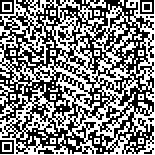郭钢花,李晓丽,李哲,范家宏,毋蓓蓓,关晨霞,乐琳,郭君.单侧脑干卒中后吞咽障碍患者双侧颏下肌群表面肌电分析[J].中华物理医学与康复杂志,2016,38(7):497-500
扫码阅读全文

|
| 单侧脑干卒中后吞咽障碍患者双侧颏下肌群表面肌电分析 |
|
| |
| DOI: |
| 中文关键词: 吞咽障碍 表面肌电图 脑干卒中 双侧 |
| 英文关键词: Dysphagia Surface electromyography Brainstem Stroke Submental muscles |
| 基金项目: |
|
| 摘要点击次数: 3859 |
| 全文下载次数: 5288 |
| 中文摘要: |
| 目的分析单侧脑干卒中后吞咽障碍患者吞咽时双侧颏下肌群表面肌电特点,并探讨吞咽障碍发生机制。 方法选取左侧脑干卒中后吞咽障碍患者8例,右侧脑干卒中后吞咽障碍患者7例及健康志愿者10例。采用表面肌电图记录上述对象吞咽5ml温水时双侧颏下肌群表面肌电振幅及时程。 结果左侧脑干卒中后吞咽障碍患者左侧颏下肌群表面肌电振幅[(46.2±16.2)μV]明显高于右侧[(43.0±13.8)μV],差异具有统计学意义(P<0.05),左侧吞咽时程[(1430.4±303.7)ms]与右侧吞咽时程[(1407.1±282.9)ms]间差异无统计学意义(P>0.05);右侧脑干卒中后吞咽障碍患者右侧颏下肌群表面肌电振幅[(47.7±15.6)μV]明显高于左侧[(40.1±9.6)μV],差异具有统计学意义(P<0.05),左侧吞咽时程[(1548.1±290.8)ms]与右侧吞咽时程[(1564.3±295.8)ms]间差异无统计学意义(P>0.05);正常人吞咽时其左、右两侧颏下肌群表面肌电振幅[分别为(30.9±2.5)μV和(30.5±3.2)μV]及时程[分别为(1288.0±221.9)ms和(1290.00±217.6)ms]间均无明显差异(P>0.05)。与正常人比较,左侧脑干卒中患者左侧颏下肌群及右侧脑干卒中患者右侧颏下肌群振幅均显著增强(P<0.05),其时程均明显延长(P<0.05)。与正常人比较,左侧脑干卒中患者右侧颏下肌群及右侧脑干卒中患者左侧颏下肌群振幅均显著增强(P<0.05),其时程均无显著差异(P>0.05)。 结论单侧脑干卒中后吞咽障碍患者其双侧颏下肌群功能均受损,且病灶侧受损程度较对侧严重。 |
| 英文摘要: |
| Objective To observe the surface electromyographic characteristics of the bilateral submental muscles in dysphagia secondary to unilateral brainstem stroke. MethodsA total of 25 subjects were recruited.There were 8 stroke patients with dysphagia secondary to a left brainstem stroke and 7 stroke patients with dysphagia secondary to a right brainstem stroke. There were also 10 healthy controls matched in age and gender. The duration and peak amplitude of the submental muscle when swallowing 5 ml of warm water were recorded using a surface electromyograph. ResultsThe average amplitude of the left submental muscle in patients with a left brainstem stroke was significantly longer than that of those with a right brainstem stroke, but no significant differences in average duration were observed. Conversely, the amplitude of the right submental muscle in patients with a right brainstem stroke was significantly longer than that of those with left brainstem stroke, but again there were no significant differences in duration. No significant differences were observed among the healthy controls. The amplitude and duration of both the affected and healthy sides of the patients were of course significantly longer or stronger than those of the healthy controls. ConclusionThe swallowing function of the bilateral submental muscles may be impaired among unilateral stroke survivors with dysphagia. The damage on the affected side is more severe than on the opposite side. |
|
查看全文
查看/发表评论 下载PDF阅读器 |
| 关闭 |